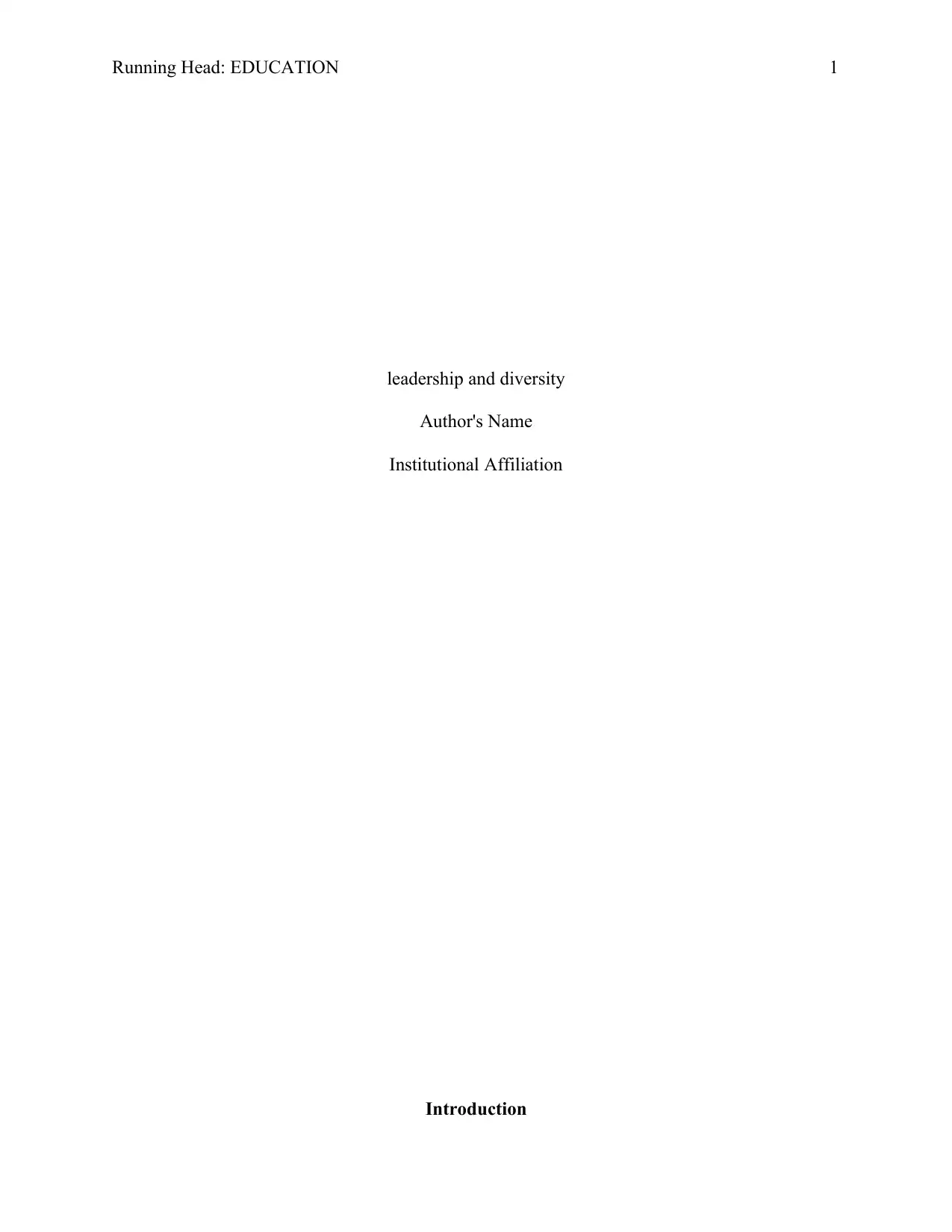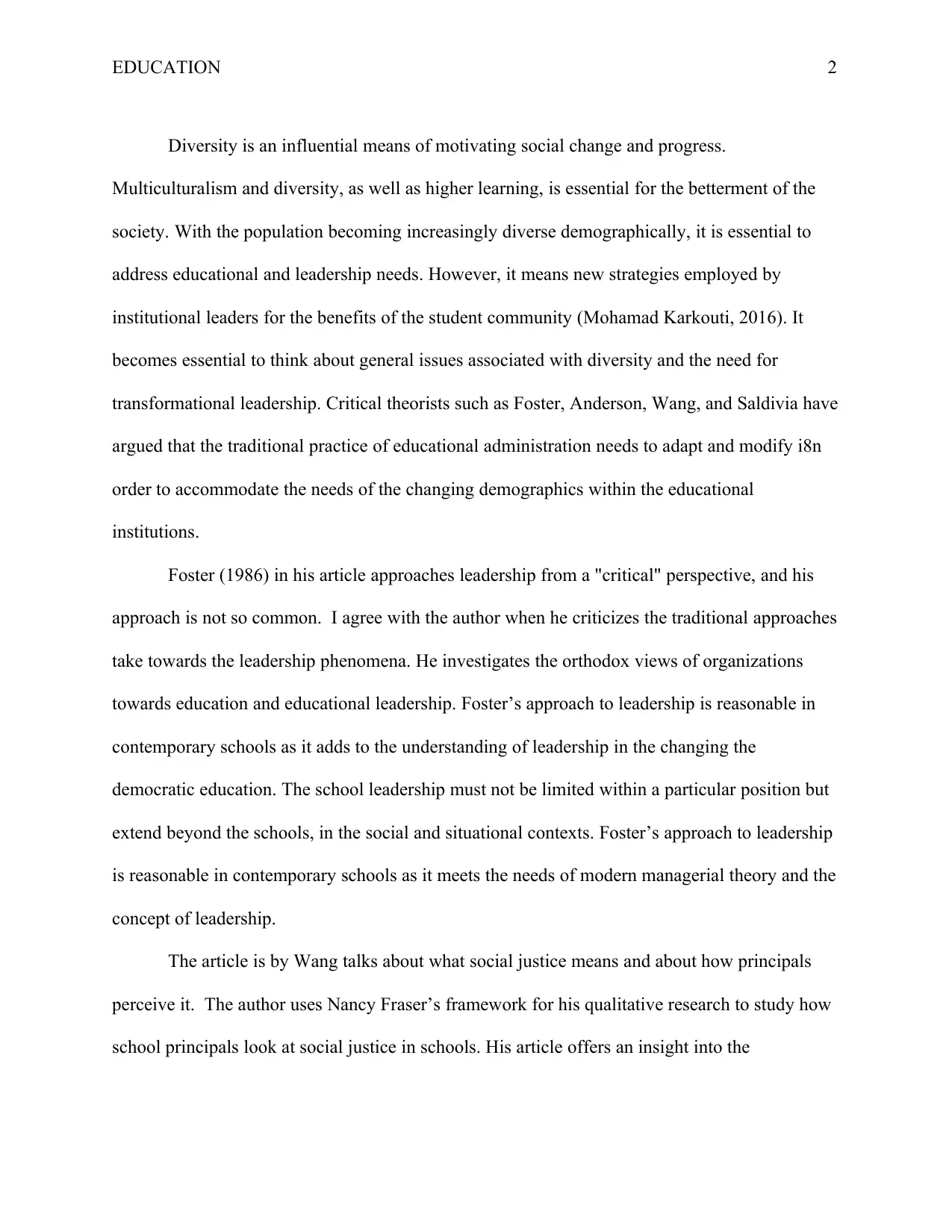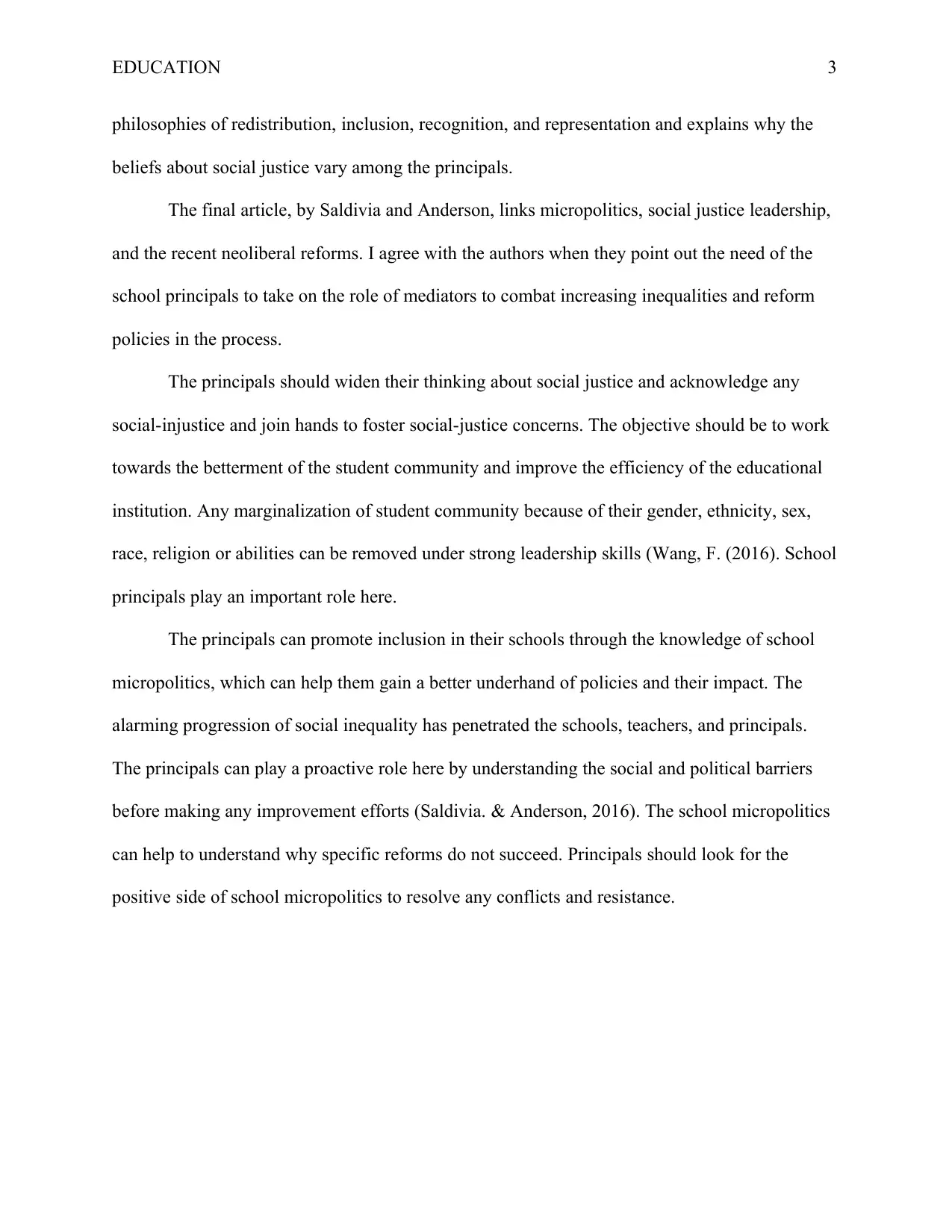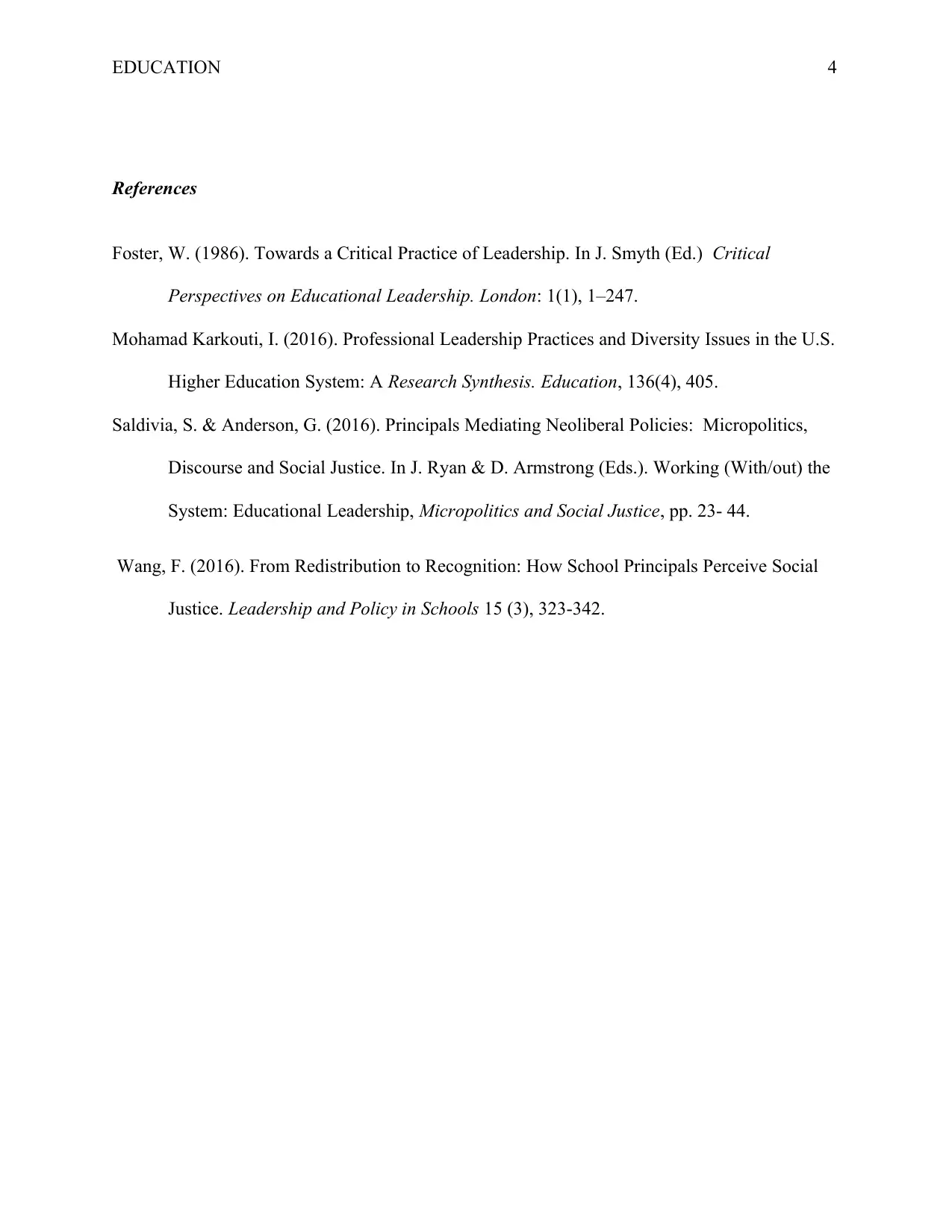The Role of Leadership in Promoting Diversity and Social Justice
VerifiedAdded on 2023/06/04
|4
|755
|198
Essay
AI Summary
This essay explores the critical role of leadership in fostering diversity and social justice within educational institutions. It critically analyzes traditional approaches to educational administration, advocating for adaptation to meet the needs of changing demographics. Drawing upon the works of Foster, Wang, and Saldivia & Anderson, the essay discusses the importance of transformational leadership, social justice, and the need for school principals to act as mediators in combating inequalities and reforming policies. It highlights the significance of inclusion, recognition, and addressing social injustices to improve the overall efficiency of educational institutions and the well-being of the student community. The essay emphasizes that strong leadership skills are essential to remove marginalization based on gender, ethnicity, sex, race, religion, or abilities, ultimately working towards the betterment of the student community and fostering social-justice concerns.
1 out of 4











![[object Object]](/_next/static/media/star-bottom.7253800d.svg)